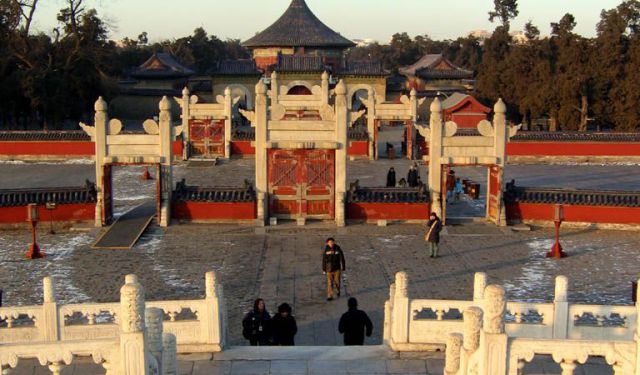
Top 10 Foods to Try in Beijing
Centuries went by and the regional Chinese, Manchurian, Mongol and Muslim cuisines boiled together to produce what's now known and loved as traditional Beijing cooking. Whenever you're in the Chinese capital, don't leave without tasting at least some of the key local meals or your trip will be a waste! Here are the top 10 considerations for your palate.
(To visit the venues mentioned in this article, check out these Self-Guided Walking Tours in Beijing)
1. Peking Duck (or Peking Roasted Duck, 北京烤鸭)
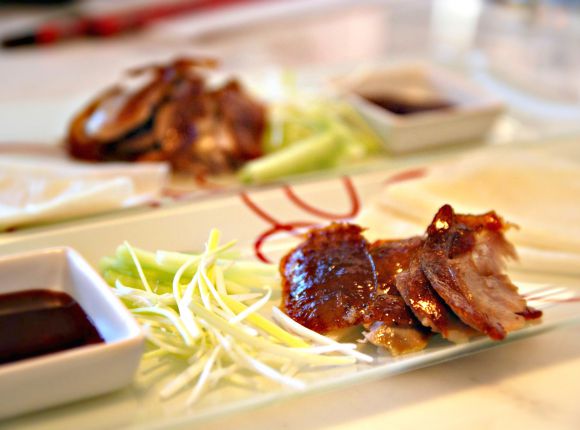.jpg)
Image Courtesy of: Alpha
This is one of the few originally Beijing dishes that has successfully survived the invasion of international cuisine on Chinese food front and even made its own advance worldwide. Now an international hit, Beijing or Peking duck has been in place since the 1300s. Eating it is a ritual and involves masterly prepared paper-thin pancakes, expert meat carving and thin slicing. Those in favor of crispy skin will find this meal an absolute must!
2. Shao Mai Dumplings (烧卖)
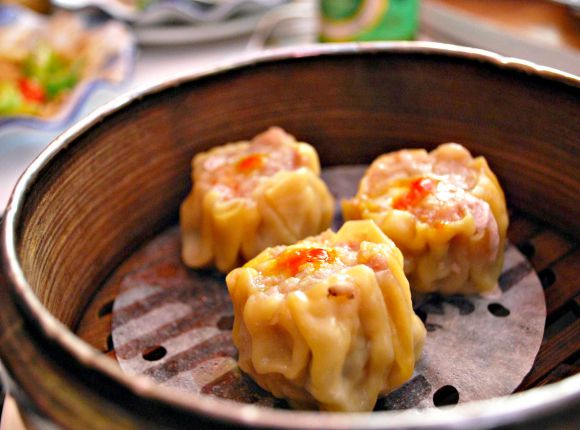.jpg)
Image Courtesy of: Alpha
Shao Mai are steam-cooked dumplings with a statement. Contrary to other traditional Chinese dumplings, these are left open at the top so you could actually see what's inside. Usually it's pork, but beef, mutton and crab can also be found, as well as shrimp, mushrooms, bamboo shoots, chives and onions. Yummy!!! Make sure to have it with a dipping sauce – soy, chile, or hot mustard – if you find a proper place to order it. There aren't many restaurants in Beijing left to sell Shao Mai these days. Reputedly, the best one still in operation for traditional Beijing Shao Mai is the Du Yi Chu Shaomai Restaurant. Hurry while you can!
3. Beggar's chicken (叫化鸡)
.jpg)
Image Courtesy of: chee.hong
Try this beggar's chicken once and you'll be begging for more, much as those numerous Chinese emperors that had treated themselves to this dish throughout centuries. Cooking it is easy – stuff and marinate the chicken, wrap it all up in lotus leaves and wax paper, smear in mud, and then bake for a few hours. The result is absolute madman! Those juices and aromas trapped inside will make you go insane, whilst the tender, succulent meat, falling off the bones without effort, will finish you off completely. A true Chinese delicacy worth dying for!
4. Zhájiàng noodles (炸酱面, Zhájiàngmiàn)
.jpg)
Image Courtesy of: Glen MacLarty
Zhájiàng wheat noodle is perhaps one of China's most popular and, hence, most often copied recipy Asia-wide. For instance, in Korea, they know it as jajangmyeon. Made by hand, these firm noodles usually come with shredded pork on top and dipped in a smoky yellow-soybean paste. In keeping with today's vegetarian trends, you can also find Zhájiàng served with tofu instead of pork. Another mandatory ingredient is fresh vegetables: julienned cucumber, crunchy radish and, in some cases, juicy bean sprouts or edamame (fresh soybeans) will mitigate the saltinness of the sauce for you. The proper way to consume Zhájiàng is to caringly turn toppings through the noodles, until you reach the desired flavour-to-noodle proportion, and then quietly suck it all in with utmost pleasure. Ooga!
5. Jianbing (煎饼)
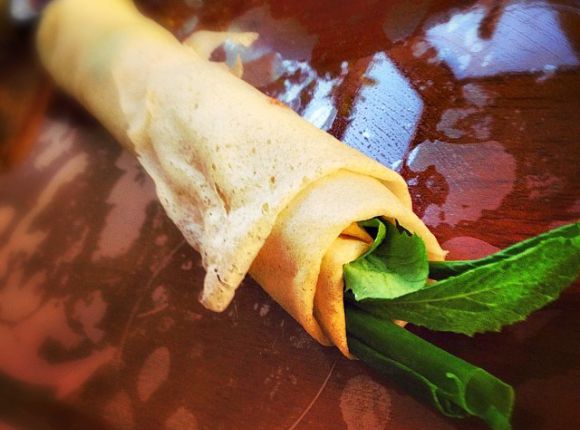.jpg)
Image Courtesy of: atsix
Fuling jiabing, also known as Fu Ling Bing, is a prime snack in Beijing! It is widely sold across the city in many shops, and its popularity has been long-lived. At some point, under the Qing Dynasty, it was even part of the royal menu. Resembling a pancake, this snack owes its name to the "fuling" ingredient, which is a sort of local medicine from the Yunnan province. The "pancake" is traditionally served cold, and cut into different patterns.
6. Hot Pot (Huo guo, 火鍋)
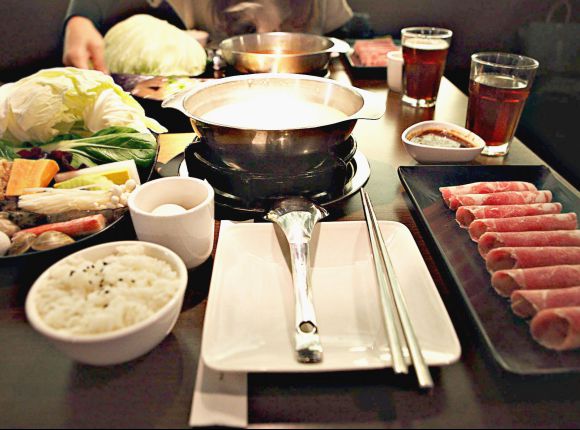.jpg)
Image Courtesy of: Jerry Lai
Those of you DIY fans will love this! In essence, this dish represents paper-thin slices of mutton or lamb cooked instantly in boiling water. For that purpose, in restaurants they put hot-pot right in the middle of the table, so that eaters could cook for themselves. The sliced meat is dropped into boiling water for just a few seconds and then, as soon as it changes color, quickly taken out. Other than meat, into the pot go tofu, vegetables, bean vermicelli, and some other ingredients. To spice it all up, they use a mixture of sesame sauce, leek flower, ginger, chili oil, and some other peculiar stuff.
7. Mung Bean Milk (Dou Zhi, 豆汁)
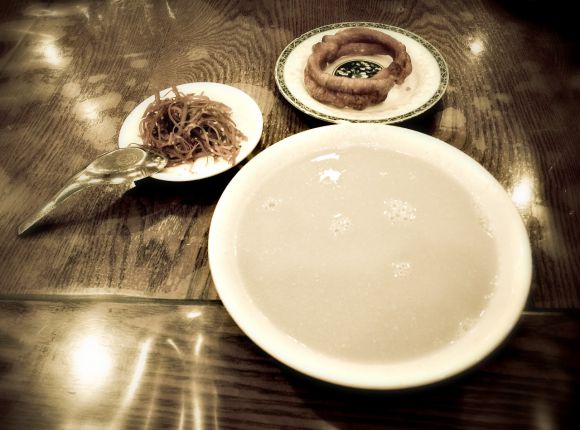.jpg)
Image Courtesy of: Forrest Feng
Don't believe those who call it soymilk! Unlike sweet soymilk, this one is slightly sour on a palate and grey-green to look at. Dòuzhī (or Mung Bean Milk) is made of mung beans, hence the name, and is as much popular with Beijingers as Coca-Cola with Americans. Rich in protein and fiber, it is said to have medicinal properties. Beijingers drink it eagerly in hot weather to cool themselves down, as well as in freezing cold winter termperatures to warm themselves up. To a foreigner, though, it is either love or hate at first sip (if not sight). The mung-bean milk is sold all over the city by street vendors and restaurants alike, which, in turn, makes it fairly easy to find out if you are a dòuzhī fan or not. Mung Bean Milk is often taken with strips of spicy pickles.
8. Peking Pork (Jing Du Pai Gu, 京都排骨)
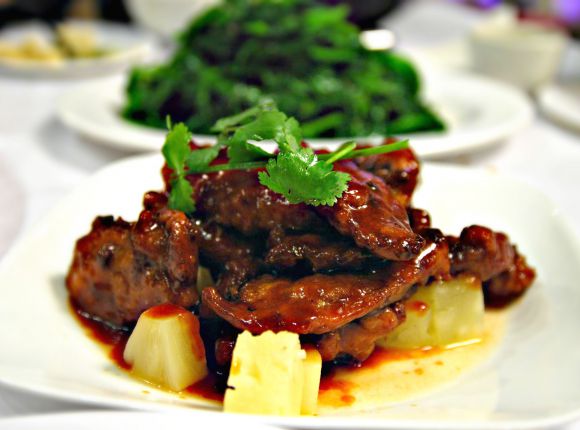.jpg)
Image Courtesy of: Alpha
Jingjiang rousi is another culinary delight adored by Beijingers and, most notably, one of the few local food hits originated here in the capital. In large part, it owes popularity to its simplicity. In essence, this is just sliced pork cooked in a sweet bean sauce and served with soya bean wraps. Not particularly impressive in appearance, once you have a bite of it, you will know where all the appeal comes from. So, if you're in Beijing and dig on swine, go give it a try! You won't regret!
9. Deep Fried Insects
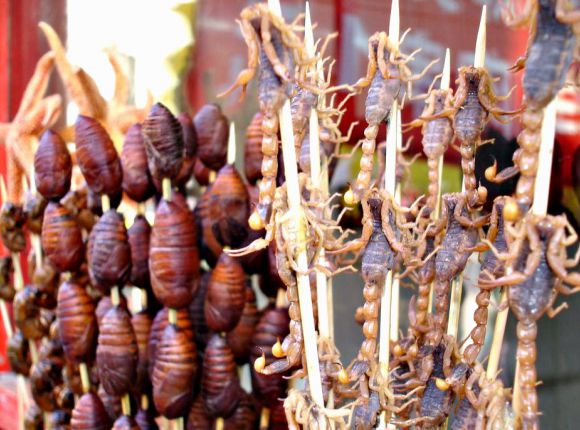
Image Courtesy of: Ven. Dr. Rangama Chandawimala Thero
If you’re in for something weird to eat, when in China, perhaps, deep fried scorpions and other bugs might satisfy your hunger. Fancy a bug-kabob? - Take a stroll down Wangfujing Snack Street in Beijing and get yourself "tempted" with the sight of scorpions wriggling on sticks in the company of other skewered crunchy beings – seahorses, starfish, dung beetles, grasshoppers – you name it.
The locals are quite keen on these delicacies, some of which are even said to provide medicinal effects. The skewers are drowned in boiling oil for a few minutes and then thoroughly spiced up. Try not to think much about what you’re eating and you might find the stick of crunchy, spicy insects rather delicious. Just don't overplay your hand with those big fat black scorpions on the first take.
The locals are quite keen on these delicacies, some of which are even said to provide medicinal effects. The skewers are drowned in boiling oil for a few minutes and then thoroughly spiced up. Try not to think much about what you’re eating and you might find the stick of crunchy, spicy insects rather delicious. Just don't overplay your hand with those big fat black scorpions on the first take.
10. Pea Flour Cake (Wan dou huang, 豌豆黄)
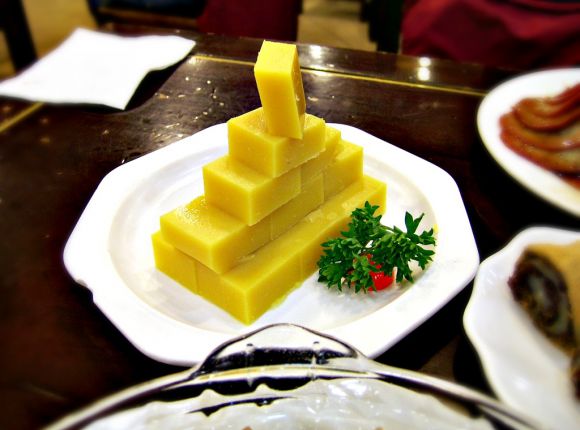.jpg)
Image Courtesy of: Toby Oxborrow
In warm time of year (spring or summer), Beijingers develop appetite for a pea flour cake. When everything is melting outside in scorching heat, they melt this thing in their mouth to refresh themselves.The cake is made of white-pea flour and has a distinct bright yellow color with a mild sweet taste.Together with kidney bean cakes and small corn buns, it makes up the top three desserts ever enjoyed by Chinese emperors in the ancient times. Pea flour cake is also eaten on a special occasion, the third day of March, as per the Chinese calendar.
Get GPSmyCity App for IOS or Android
You can read offline thousands of travel articles like this one in the "GPSmyCity: Walks in 1K+ Cities" app on Apple App Store or Google Play Store. The apps also offer city offline maps and GPS navigation to guide you to the places featured in the articles.
Walking Tours in Beijing, China
Create Your Own Walk in Beijing
Creating your own self-guided walk in Beijing is easy and fun. Choose the city attractions that you want to see and a walk route map will be created just for you. You can even set your hotel as the start point of the walk.
Beijing City Center Walking Tour
A political, cultural, and economic center of China for the past eight centuries, Beijing is the newest of the country's Four Ancient Capitals.
The city boasts the grandest and best preserved imperial palaces, gardens and temples, including seven UNESCO World Heritage sites, such as the Forbidden City, Temple of Heaven, Summer Palace, Ming Tombs, Zhoukoudian, and parts of the Great Wall... view more
Tour Duration: 2 Hour(s)
Travel Distance: 3.7 Km or 2.3 Miles
The city boasts the grandest and best preserved imperial palaces, gardens and temples, including seven UNESCO World Heritage sites, such as the Forbidden City, Temple of Heaven, Summer Palace, Ming Tombs, Zhoukoudian, and parts of the Great Wall... view more
Tour Duration: 2 Hour(s)
Travel Distance: 3.7 Km or 2.3 Miles
Beijing's Historical Temples Tour I
Chinese temples are of unique beauty and have withstood many dynasties. However because the temples have always been connected to the imperial families, many of them were destroyed when the last dynasty ended in 1911. Nevertheless, a great number of beautiful temples with great history still stand in Beijing. Take this self-guided walking tour to discover a few famous temples in the northern part... view more
Tour Duration: 1 Hour(s)
Travel Distance: 0.9 Km or 0.6 Miles
Tour Duration: 1 Hour(s)
Travel Distance: 0.9 Km or 0.6 Miles
Beijing's Historical Temples Tour II
The places of worship are some of the best links to the city's history. The unique churches, Buddhist and Taoist Temples, and beautiful Muslim Mosques all tell great tales of the history of Beijing. Despite that many of them have been partially or completely destroyed over the years either by wars or by the changes of political power, a good number of them still remain. You can visit a few... view more
Tour Duration: 1 Hour(s)
Travel Distance: 2.1 Km or 1.3 Miles
Tour Duration: 1 Hour(s)
Travel Distance: 2.1 Km or 1.3 Miles






